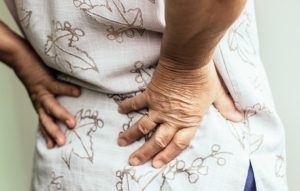 Despite the study terminating early due to recruitment difficulties, the results suggest that the addition of subcutaneous nerve stimulation to optimised medical management is clinically and statistically more effective than optimised medical management alone in relieving low back pain at up to nine months. These findings support the results of a number of earlier uncontrolled case series.
Despite the study terminating early due to recruitment difficulties, the results suggest that the addition of subcutaneous nerve stimulation to optimised medical management is clinically and statistically more effective than optimised medical management alone in relieving low back pain at up to nine months. These findings support the results of a number of earlier uncontrolled case series.
The SubQStim study was the largest multicentre randomised control trial comparing optimised medical management and subcutaneous nerve stimulation to optimised medical management in patients with back pain due to failed back surgery syndrome. Failed back surgery syndrome was defined as persistent low back and/or leg pain after technically and anatomically successful lumbar spine surgery.
The study aimed to compare the effectiveness of peripheral nerve stimulation using a subcutaneous lead implant technique—subcutaneous nerve stimulation plus optimised medical management vs. optimised medical management alone in patients with back pain due to failed back surgery syndrome.
Patients were recruited from 21 centres, in Europe, Israel, and Australia. Eligible patients were randomised in a 1:1 basis to subcutaneous nerve stimulation and optimised medical management or optimised medical management arms. Those in the subcutaneous nerve stimulation arm were implanted with a neurostimulator and up to two subcutaneous percutaneous cylindrical leads in the area of pain.
Patients were evaluated pre-randomisation and at one, three, six, and nine months’ post-randomisation. The primary endpoint was the proportion of subjects with a ≥50% reduction in back pain intensity (“responder”) from baseline to nine months. Secondary outcomes included proportion of responders with a ≥50% reduction in back pain intensity at six months and ≥30% reduction at nine months, and the mean change from baseline in back pain intensity at six and nine months between the two arms.
Those recruited to the study need to demonstrate predominant back pain and be aged 18 or older and were excluded if they had or were being treated with a neurostimulator or intrathecal drug delivery system.
There was a slow rate of recruitment which led to the study being terminated early with 116 patients randomised. A total of 33.9% (19/56, missing: n=20 [36%]) of subjects in the optimised medical management and subcutaneous nerve stimulation arm and 1.7% (1/60, missing: n=24 [40%]) in the optimised medical management arm were responders at month nine (p<0.0001). Secondary objectives showed a significant difference in favour of optimised medical management and subcutaneous nerve stimulation arm.
The results of the trial indicate that the addition of subcutaneous nerve stimulation to optimised medical management is more effective than optimised medical management alone in relieving low back pain at up to nine months.







